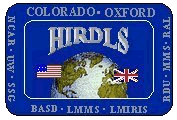Dataset Collection
HIgh Resolution Global Distributions of Temperature, Clouds, Aerosols, and 10 Trace Species Data from the High Resolution Dynamics Limb Sounder (HIRDLS) instrument measurements
Abstract
HIRDLS was a joint US-UK development effort, with sponsorship by the British National Space Centre and the Natural Environment Research Council in the UK, and by NASA in the US. HIRDLS was an mid-infrared limb-scanning radiometer (21 channels from 6.12 to 17.76 µm and provides sounding observations to observe the lower stratosphere with improved sensitivity and accuracy. HIRDLS was carried on the Aura mission, part of the A-train procession of polar orbiting satellites forming part of NASA's Earth Observing System (EOS).
This dataset collection contains data of the global distributions of temperature, clouds, aerosols, and 10 trace species O3, H2O, CH4, N2O, NO2, HNO3, N2O5, CFC11, CFC12, and ClONO2 in the stratosphere and upper troposphere at high vertical and horizontal resolution in the Earth's atmosphere between about 8 and 100 km, from the High Resolution Dynamics Limb Sounder (HIRDLS) instrument.
The instrument provides high vertical resolution information despite the fact that the optical beam is partially obstructed between the scan mirror and the aperture, probably by a piece of inner lining material that became detached during launch. HIRDLS science-team members have produced correction algorithms that make use of the partial view of the atmosphere (vertical scans around azimuth angle of 47 degree line of sight to the orbital plane, on the side away from the sun). In spite of this anomaly, HIRDLS has retained most of its scientific capabilities to support the Aura Mission.
HIRDLS was carried on the Aura mission, part of NASA's Earth Observing System (EOS). Aura was launched on 15th July 2004 at 11:01:59 a.m. BST from Vandenberg Air Force Base, California.
Temporal Range
2004-01-01T00:00:00
2014-12-31T23:59:59
Geographic Extent
90.0000° |
||
-180.0000° |
180.0000° |
|
-90.0000° |

